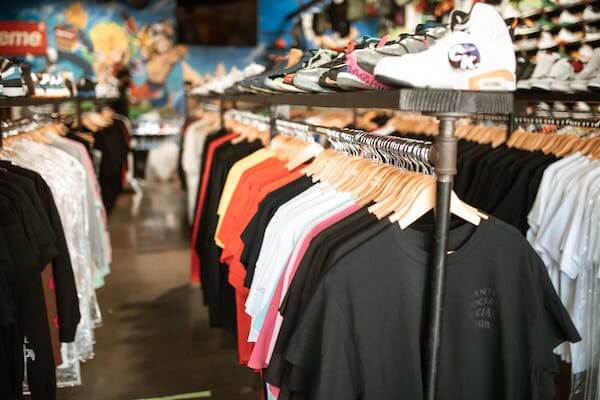Clothes Manufacturing Business:
The purpose of this business plan is to outline the steps and strategies required to start a clothing manufacturing business in Pakistan. The Pakistani textile industry is one of the largest contributors to the country's economy, making it an ideal location for such a venture.
This business plan will cover key aspects such as market analysis, product offerings, operational requirements, marketing strategies, and financial projections.
1. Introduction of Clothes Manufacturing :
1.1
Business Overview:
The clothing manufacturing business will involve the production of high-quality garments for both domestic and international markets. The focus will be on producing trendy, affordable, and sustainable clothing items for men, women, and children.
1.2
Vision:
Our vision is to become a leading clothes manufacturer in Pakistan, known for our commitment to quality, sustainability, and customer satisfaction.
1.3
Mission:
Our mission is to provide customers with fashionable and affordable clothing options while ensuring ethical manufacturing practices and promoting environmental sustainability.
2. Market Analysis:
2.1
Industry Overview:
The textile and garment industry in Pakistan is a significant contributor to the country's GDP, with a strong export market. The industry benefits from a skilled workforce, cost-effective production capabilities, and a favorable geographical location for international trade.
2.2
Target Market:
Our primary target market will be domestic and international wholesalers, retailers, and fashion brands that are looking for reliable clothing manufacturers. We will also cater to direct-to-consumer sales through our online platform and physical store (if applicable).
2.3
Competitive Analysis:
There is intense competition within the clothing manufacturing sector in Pakistan. However, by focusing on quality, sustainability, and timely delivery, we aim to differentiate ourselves from competitors and capture a significant market share.
3. Product Offerings:
3.1
Product Line:
Our product line will include a wide range of clothing items such as shirts, trousers, dresses, skirts, tops, and jackets for men, women, and children. We will offer customization options, allowing clients to select fabrics, colors, and designs according to their preferences.
3.2 Sourcing and Materials for Clothes Manufacturing :
To ensure quality and sustainability, we will source materials from reputable suppliers that adhere to ethical and environmentally friendly practices. We will prioritize organic and recycled materials whenever possible.
4. Operational Requirements:
4.1
Location and Facilities:
Selecting an appropriate location for the manufacturing facility is crucial. Factors such as proximity to textile suppliers, transportation infrastructure, and availability of skilled labor should be considered. Adequate space will be required for production, storage, and administrative activities.
4.2 Equipment and Machinery:
Investing in modern machinery and equipment is essential for efficient production. This includes sewing machines, cutting tables, pressing equipment, and other necessary tools. Regular maintenance and upgrades should be planned to ensure optimal performance.
4.3
Workforce:
Hiring skilled workers with experience in garment manufacturing will be critical. The workforce should include tailors, pattern makers, quality control personnel, and administrative staff. A training program can be implemented to enhance skills and ensure consistency in product quality.
5. Marketing and Sales Strategies:
5.1
Branding and Positioning:
Developing a strong brand identity that resonates with the target market is crucial. We will position ourselves as a reliable and sustainable clothing manufacturer, highlighting our commitment to quality and ethical manufacturing practices.
5.2
Online Presence:
Creating a user-friendly website and online store will enable direct-to-consumer sales and improve brand visibility. Utilizing digital marketing techniques such as search engine optimization (SEO), social media marketing, and influencer collaborations will be essential for online success.
5.3
B2B Partnerships:
Establishing relationships with wholesalers, retailers, and fashion brands will be a key aspect of our marketing strategy. Attending trade shows, participating in industry events, and building a strong sales team will help in securing partnerships.
6. Financial Projections:
6.1
Start-up Costs:
The initial investment will include expenses for equipment, machinery, facility setup, inventory, marketing, and legal requirements. A detailed financial analysis should be conducted to estimate start-up costs accurately.
6.2
Revenue Forecast:
Revenue projections will be based on market research, anticipated sales volumes, and pricing strategies. Monthly and yearly sales targets should be established to track progress and make necessary adjustments.
6.3
Cost Analysis:
A comprehensive cost analysis, including manufacturing costs, overheads, and operational expenses, should be conducted. Monitoring and optimizing costs will be crucial for maintaining profitability.
6.4
Funding Requirements:
Assessing the funding requirements and exploring various financing options such as loans, grants, and partnerships will be essential. A detailed financial plan should be presented to potential investors or lenders.
Conclusion:
To start a clothes manufacturing business in Pakistan presents significant opportunities in a thriving industry. By leveraging the country's textile expertise, focusing on quality and sustainability, and implementing effective marketing strategies, we can establish a successful venture. This business plan serves as a roadmap for launching and growing the business while ensuring long-term profitability and customer satisfaction.

0 Comments